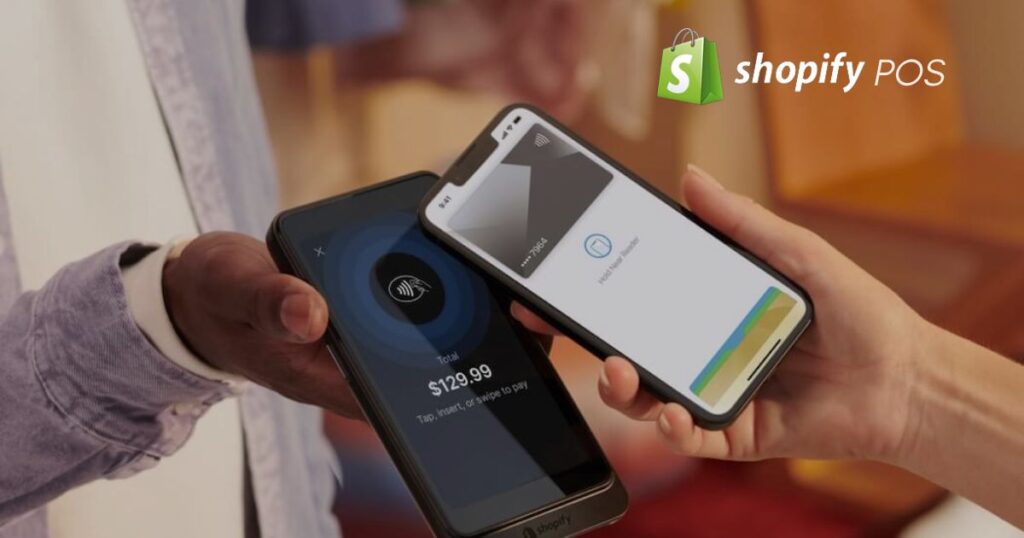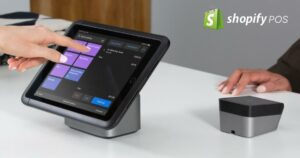A point of sale (POS) system is a crucial tool for any business that sells products or services. It allows business owners to process payments, manage inventory, and keep track of customer data in one centralized location.
Shopify POS is a popular POS system that enables businesses to manage their offline and online sales in one place.
Shopify POS is an extension of the Shopify e-commerce platform, which allows businesses to sell online. The POS system integrates seamlessly with the online store, providing business owners with a holistic view of their sales, inventory, and customer data. This makes it easier for businesses to manage their operations and grow their customer base.
In this Shopify POS review, we will examine the features, pricing, and packages offered by Shopify POS. We will also provide a step-by-step guide to setting up and using Shopify POS. Furthermore, we will explore the pros and cons of using Shopify POS and compare it with other POS systems on the market.
Features of Shopify POS
- Shopify POS is a feature-rich POS system that offers a wide range of functionalities to help businesses manage their offline and online sales.
- Payment processing is a key feature of Shopify POS, allowing businesses to accept payments through various methods such as credit cards, debit cards, and mobile payments.
- Inventory management is another essential feature that enables businesses to track their inventory levels, receive alerts when stock is low, and automatically update inventory levels across all sales channels.
- Sales reports and analytics provide businesses with valuable insights into their sales performance, enabling them to make informed decisions and optimize their operations.
- Customer management allows businesses to store customer data such as contact information, purchase history, and preferences, enabling them to provide a personalized shopping experience.
- Discounts and promotions can be easily created and applied to orders, allowing businesses to offer special deals and increase customer loyalty.
- Integration with the Shopify online store means that businesses can manage their offline and online sales in one place, simplifying operations and providing a holistic view of their business.
- Shopify POS is compatible with a range of mobile devices and hardware, providing businesses with flexibility and enabling them to take their sales on the go.
Ready to Try Shopify POS for Free?
You can test out whether Shopify is right for your business, without spending a thing,
we always recommend testing it before buying!
Shopify POS Pricing and Packages
In this section of the Shopify POS review, we will talk about the pricing and packages to help you make an informed choice about the one you’d choose.
Shopify POS has three distinct price plans, namely Shopify POS Lite, Shopify POS Go, and Shopify POS Pro, in order to cater to the varying requirements of various types of companies.
Since each package comes with its own distinct collection of features and choices for price, companies are able to choose the package that is most suited to their requirements and financial constraints.
Shopify POS Lite
The Shopify POS Lite package is the entry-level option, providing companies with fundamental capabilities at a cost that is more manageable. The bundle has no cost, making it a desirable choice for start-ups and other small firms that operate on tight budgets.
Shopify POS Lite gives companies the ability to manage their inventory and process credit card payments, but it is missing some of the more extensive functions that are included in the other Shopify POS packages.
Shopify POS Go
The Shopify POS Go solution is the company’s mid-tier option, and it provides companies with more sophisticated capabilities at an increased cost.
The plan has a monthly fee of $29 and includes capabilities such as management for multiple locations and workers, as well as support for hardware provided by a third party.
Compared to Shopify POS Lite, Shopify POS Go comes with a more extensive set of analytics and reporting options.
Shopify POS Pro
The Shopify POS Pro package is the most complex one, and it provides companies with the most extensive collection of features and functions.
This plan has a monthly fee of $89 and offers support for numerous staff accounts, in addition to advanced reporting and analytics, sophisticated inventory management, and advanced reporting and analytics.
Creating and managing purchase orders, moving goods across stores, and making bespoke gift cards are some of the additional capabilities that come standard with Shopify POS Pro.
It is essential to give careful consideration to both your individual requirements and available funds before selecting the optimal plan for your company. Shopify POS Lite is an option that you may want to consider if you run a small company that has relatively simple requirements.
Shopify POS Go or Shopify POS Pro can be a better option for you if your requirements are more intricate and your budget is higher.
A step-by-step Guide to Setting Up Shopify POS
Download the Shopify POS app: The Shopify POS app is available on the App Store for iOS devices and the Google Play Store for Android devices. Download the app to your device and log in with your Shopify account credentials.
Connect your hardware: If you have purchased any additional hardware, such as a card reader or barcode scanner, connect it to your device using Bluetooth or a cable.
Add products: To start using Shopify POS, you will need to add products to your store. You can do this by logging in to your Shopify account on a computer and adding products to your online store, or by using the Shopify POS app to add products on the go.
Set up payment processing: Shopify POS offers a range of payment processing options, including credit card payments, cash payments, and gift cards. To set up payment processing, go to the Payments section of your Shopify account and follow the instructions.
Customize your settings: Shopify POS offers a range of customization options, including receipt templates, taxes, and discounts. You can customize these settings in the Shopify POS app or on your Shopify account on a computer.
Using Shopify POS
A brick-and-mortar retail company may benefit greatly from using Shopify POS since it is an effective tool for controlling sales and inventory.
In this section, we will provide a detailed guide on how to use Shopify POS review for a variety of different sales scenarios, including the processing of payments, refunds, and exchanges. Here are some common sales scenarios and how to use Shopify POS in each one:
Ringing up a Sale
To start a sale, you can simply select the items the customer wishes to purchase on the Shopify POS app. You can use a barcode scanner or search for the product using the app.
Once you have selected the items, you can input any relevant discounts, taxes, or shipping fees. Then, you can select the payment method and process the payment.
Processing an Exchange
To process an exchange, you can use the “Add Items” button on the Shopify POS app to select the item being exchanged. Then, you can add the new item the customer wants to purchase and process the payment or refund the difference.
Creating a Custom Order
If a customer requests a custom order, you can use the “Custom Order” feature on the Shopify POS app. You can input the items, payment method, and any relevant discounts or taxes.
Ready to Try Shopify POS for Free?
You can test out whether Shopify is right for your business, without spending a thing,
we always recommend testing it before buying!
Processing Payments, Refunds, and Exchanges
Processing Payments
Shopify POS offers a variety of payment options, including credit/debit card, cash, and gift cards. You can easily process payments by selecting the payment method and inputting the relevant information.
Processing Refunds
If a customer wishes to return an item, you can use the “Refund” feature on the Shopify POS app. You can input the item being returned, select the payment method, and process the refund.
Processing Exchanges
To process an exchange, you can use the “Add Items” button on the Shopify POS app to select the item being exchanged. Then, you can add the new item the customer wants to purchase and process the payment or refund the difference.
Managing Inventory and Customer Data
Inventory Management
Shopify POS allows you to manage your inventory in real-time. When an item is sold, the inventory is automatically updated. You can also set up low-stock alerts and receive notifications when an item is running low.
Customer Management
Shopify POS allows you to create customer profiles, including contact information and purchase history. This can help you track customer preferences and purchase patterns, allowing you to offer targeted promotions and discounts.
Using Discounts and Promotions
Creating Discounts
You can create discounts for specific products or for the entire order. You can set the discount amount or percentage, and choose whether to offer it as a code or automatically apply it at checkout.
Creating Promotions
Shopify POS allows you to create promotions, such as buy-one-get-one-free or free shipping. You can set the promotion criteria, such as minimum purchase amount or specific products.
Generating Sales Reports and Analytics
Sales Reports
Shopify POS allows you to generate sales reports, including total sales, sales by product, and sales by payment method. You can also view daily, weekly, or monthly reports.
Analytics
Shopify POS offers analytics on customer data, such as purchase history and order frequency. This can help you make data-driven decisions for your business.
Take Away
Shopify POS is a valuable tool for companies who want to simplify the procedures of managing their inventory and sales, online and offline.
Businesses are able to make educated judgments and provide a streamlined checkout experience for consumers if they use a step-by-step guide that walks them through the various sales situations, the processing of payments and refunds, and the management of inventory and customer data.






